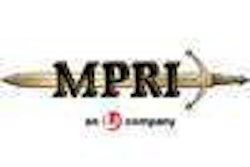Overcapacity explains most of today’s challenges facing commercial and private fleets. Every day on the front lines, load planners and dispatchers grapple with load imbalance. The number of trucks and drivers is greater than the number of loads.
In late 2005 when freight volumes peaked, fleets were accustomed to using information systems to filter through an abundant supply of loads to find the best matches for drivers. Even if the solution they found was less than optimal, at least it was profitable.
Today, the load imbalance has forced many fleets to take drastic actions just to keep trucks moving and margins intact. In this environment, the best-run fleets have equipped themselves with information systems that help them adapt quickly to dynamic challenges.
Making the best possible driver-load assignments requires the ability to consider all of the alternatives and tradeoffs simultaneously. The larger the fleet, the more impossible it becomes for humans to calculate.
Earlier this year, C.R. England – the largest refrigerated carrier in the nation – implemented a sophisticated set of optimization tools from Manhattan Associates. Its suite of tools includes Driver&Load for matching drivers to the best possible load combinations across its network, and Drop&Swap to evaluate drivers and load combinations to determine optimal swaps en route.
To ensure that the software’s recommendations are optimal, C.R. England has taken extra steps to ensure the software has the most current cost information and fleetwide integration. C.R. England’s fuel cost per mile is updated to Driver&Load, by fuel market, on a weekly basis; keeping this information current enables the software to assign an accurate cost for deadhead miles. As fuel costs rise, the software automatically clamps down on deadhead mileage, says Ron Hall, director of business strategy for the Salt Lake City-based carrier.
Because optimization software matches drivers and loads on a global scale, obstacles such as regional load planning no longer blind fleet managers to the opportunities that exist for matching or swapping loads en route between two or more regions; as a result, the best driver is assigned to the best load, Hall says. As part of the implementation, C.R. England integrated six to eight additional columns of data into the existing load-planning screen of its AS400 platform.
One of C.R. England’s priorities is to use the optimization software to remove the slack time from its network. The company uses a metric called Scheduled MPH to capture what the MPH is on a load at the time it is scheduled. For instance, if pick up for a load with distance of 480 miles is scheduled for Monday at 7 AM and the delivery appointment set for Wednesday at 7 AM, Scheduled MPH is 10 mph.
Another metric, Final MPH, captures the time from pickup to the actual delivery time. On the same load if a driver is able to run it straight in and deliver it Tuesday at 7am, the Final MPH is 20 mph.
The company has customized the tables in Driver&Load to flag opportunities for certain types of drivers – particularly team drivers that can utilize equipment around the clock – to be assigned to “high-efficiency” loads to increase load velocity.
“We’re working to encourage our scheduling staff to increase the Scheduled MPH on the loads before they’re ever sent to the drivers, and then incentivizing our driver manager staff to increase the MPH even higher for the Final MPH by pushing their drivers in earlier,” says John Coyle, production coordinator for C.R. England.
During a presentation in May at Manhattan’s momentum 09 user conference, Coyle said that since implementing the optimization tools, deadhead miles have decreased from 7 to 5.7 percent, excess paid miles have decreased from 1.7 to 0.7 percent, and Scheduled MPH has increased from 20.5 to 23.1.
Small fleets may not have the resources or complexity to justify the use of optimization software to match and swap drivers and loads, but for carriers that do, the overcapacity in today’s market is not as painful as it would be without it.














